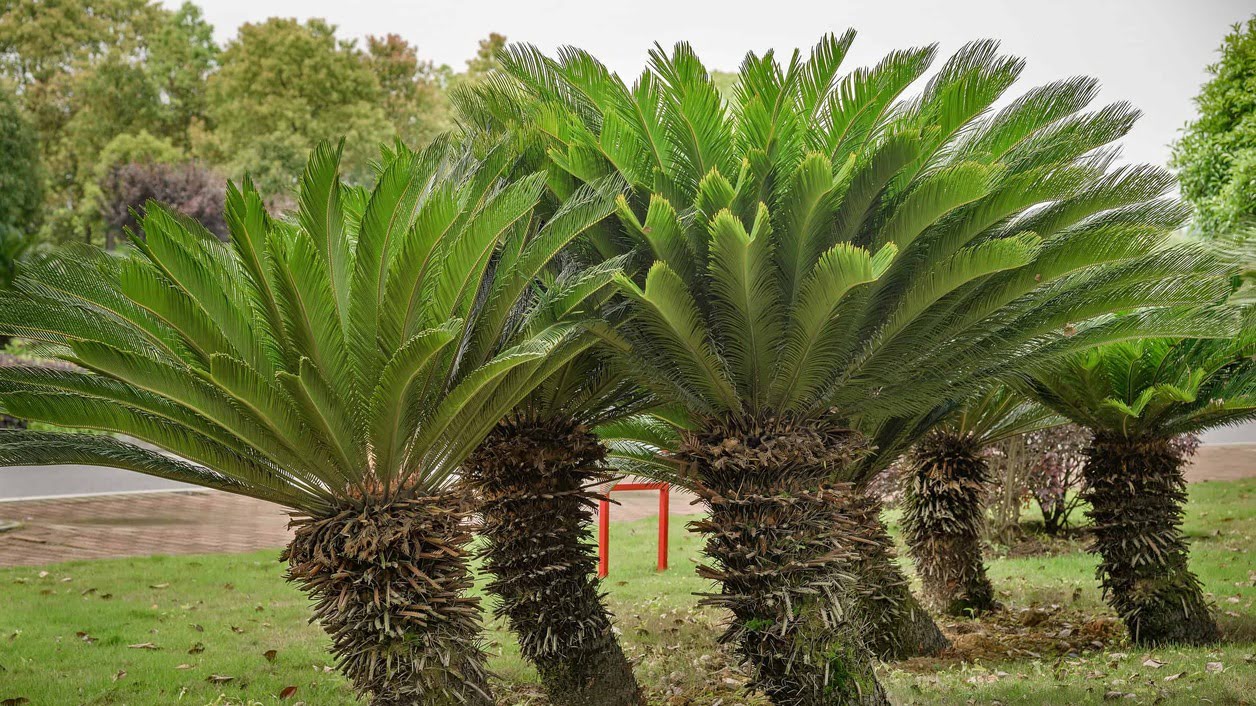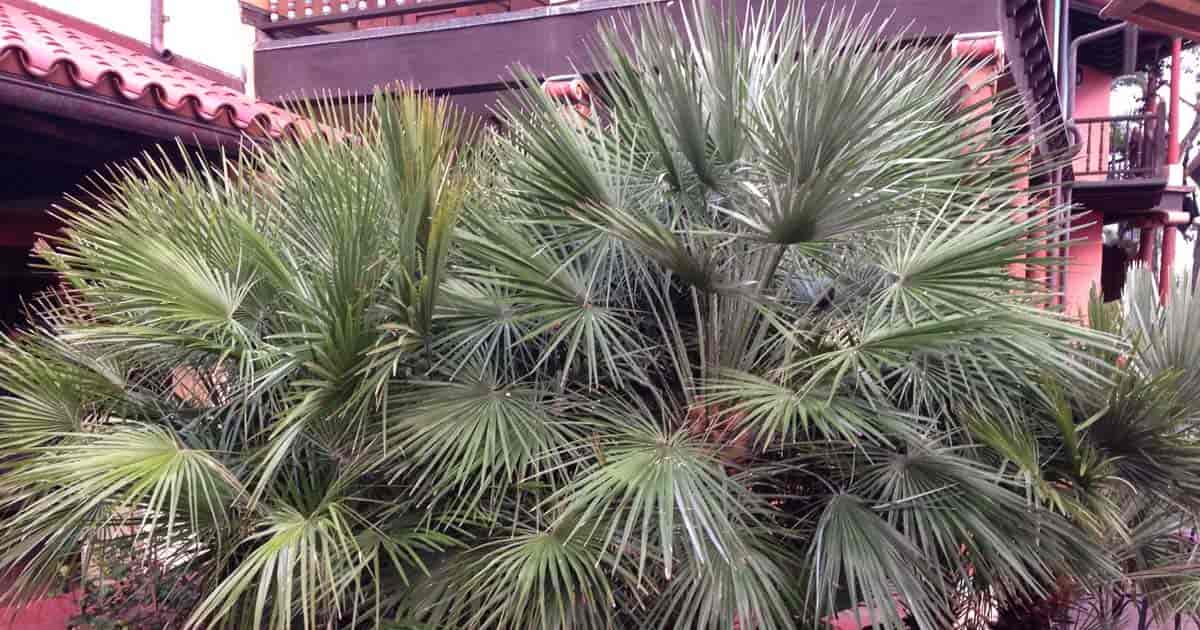Home>Gardening News and Trends>Latest News>Why Does In N Out Have Crossed Palm Trees


Latest News
Why Does In N Out Have Crossed Palm Trees
Modified: January 22, 2024
Discover the latest news on why In N Out has chosen to feature crossed palm trees in their logo and branding. Learn about the significance and cultural influences behind this iconic symbol.
(Many of the links in this article redirect to a specific reviewed product. Your purchase of these products through affiliate links helps to generate commission for Chicagolandgardening.com, at no extra cost. Learn more)
Table of Contents
Introduction
Welcome to the world of In-N-Out Burger, a beloved fast-food chain that has garnered a cult-like following across the United States. You may have noticed the iconic logo of In-N-Out Burger featuring two crossed palm trees. This simple yet striking design has become synonymous with the brand and has piqued the curiosity of many. Why does In-N-Out have crossed palm trees as their logo? What is the significance behind this symbol?
Founded in 1948 by Harry and Esther Snyder in Baldwin Park, California, In-N-Out Burger has become a cultural institution within the fast-food industry. With its commitment to quality, fresh ingredients, and a simple yet delicious menu, In-N-Out has captured the hearts and taste buds of millions of customers.
So, why did In-N-Out choose crossed palm trees as their logo? To understand the symbolism behind this iconic image, we need to delve into the roots of In-N-Out Burger and the rich history of California, where it all began.
California, often referred to as the “Golden State” and famous for its stunning coastline and sunny weather, is home to an abundance of palm trees. These tall, slender trees with their signature fan-shaped leaves are a quintessential symbol of the Californian lifestyle. They evoke feelings of relaxation, warmth, and vacation vibes.
In-N-Out Burger, being a quintessential Californian brand, wanted to capture the essence of the state in their logo. The crossed palm trees represent the laid-back, beachy lifestyle that California is known for. It is a nod to the endless summer and the carefree spirit that permeates the state.
Moreover, the palm trees also serve as a tribute to the roots of In-N-Out Burger. The first In-N-Out location was opened in Baldwin Park, California, right in the heart of the state. By incorporating the iconic California palm trees into their logo, In-N-Out pays homage to its birthplace and the community that supported its humble beginnings.
The History of In-N-Out Burger
The story of In-N-Out Burger begins in 1948 when Harry and Esther Snyder opened the first In-N-Out location in Baldwin Park, California. The couple had a vision to create a fast-food restaurant that focused on quality, freshness, and friendly service.
Harry Snyder, a self-taught businessman, believed in a simple yet effective philosophy: “Give customers the freshest, highest quality foods you can buy and provide them with friendly service in a sparkling clean environment.” This philosophy became the foundation of In-N-Out Burger and remains at the core of its success.
From the beginning, In-N-Out Burger stood out from its competitors by utilizing a unique cooking method. Fresh, never-frozen beef is cooked to order, ensuring the juiciest and most flavorful burgers possible. This commitment to freshness has been a driving force behind In-N-Out’s popularity.
As the restaurant gained popularity, the Snyder family continued to expand their business. In the 1950s, they introduced the concept of the “drive-thru” to their locations, providing customers with a convenient way to enjoy their food on the go. This innovative approach to fast food became a hit and further solidified In-N-Out’s status as a leader in the industry.
Despite the rapid expansion, In-N-Out Burger has remained a family-owned and operated business. This dedication to maintaining their roots and upholding their principles has allowed In-N-Out to stay true to its original vision.
Today, In-N-Out Burger has over 350 locations across several states, but its commitment to quality and freshness remains unwavering. The menu has remained relatively unchanged, featuring classic items like the Double-Double (double patty, double cheese), hamburgers, cheeseburgers, and the renowned Animal Style fries.
The success of In-N-Out Burger can be attributed not only to its delicious food but also to its exceptional customer service. In-N-Out employees, known as “Associates,” receive extensive training and are encouraged to prioritize customer satisfaction above all else. This personalized and friendly service has contributed to the loyal customer base that In-N-Out has cultivated over the years.
In-N-Out Burger has managed to achieve what many fast-food chains strive for: a brand identity rooted in quality, freshness, and a commitment to customer satisfaction. The history of In-N-Out is a testament to the power of staying true to one’s values and delivering a consistently exceptional product.
The Symbolism of Palm Trees
Palm trees hold a significant place in cultural symbolism around the world. These majestic trees have long been associated with various meanings and representations, often tied to their physical characteristics and the regions they thrive in.
One of the most prevalent symbols associated with palm trees is that of tropical paradise and relaxation. With their tall, slender trunks and lush, green fronds, palm trees evoke images of serene beaches, warm weather, and a carefree lifestyle. They are often seen as symbols of vacation, leisure, and escape from the daily grind.
In addition to their association with leisure, palm trees also embody a sense of resilience. Found in coastal regions, palm trees demonstrate the ability to withstand strong winds, harsh weather conditions, and even hurricanes. They symbolize strength, adaptability, and the determination to survive against all odds.
Furthermore, palm trees have deep-rooted cultural and religious significance in many societies. In ancient civilizations, such as Egypt and Mesopotamia, palm trees were seen as symbols of fertility, prosperity, and abundance. The fronds and fruit of palm trees were used in various rituals and celebrations, representing growth, renewal, and the bounties of nature.
In Christianity, palm leaves are associated with Palm Sunday, a day commemorating Jesus’ triumphal entry into Jerusalem. It is a symbol of victory, glory, and faith. Palm branches were waved by the crowds to honor Jesus and pave the way for his arrival.
Across different cultures and religions, palm trees have held a special place in artistic representations as well. They often feature prominently in paintings, poems, and literature, serving as a visual representation of natural beauty, tranquility, and the allure of exotic landscapes.
When it comes to the logo of In-N-Out Burger, the crossed palm trees not only tap into the collective symbolism associated with these trees but also speak directly to the California identity that In-N-Out embodies. The choice of palm trees as the logo creates an instant connection with the laid-back, beachy lifestyle that is so deeply ingrained in California culture.
Overall, palm trees are multi-dimensional symbols that evoke feelings of relaxation, resilience, abundance, and beauty. They serve as a visual representation of the paradise-like landscapes and embody the essence of coastal regions worldwide. In the case of In-N-Out Burger, the crossed palm trees represent not only the Californian lifestyle but also the brand’s commitment to providing a little taste of paradise with every bite.
The Story Behind the Crossed Palm Trees Logo
The crossed palm trees logo of In-N-Out Burger has become an iconic symbol that instantly grabs attention and resonates with fans of the brand. But what is the story behind this distinctive logo?
The origin of the crossed palm trees logo can be traced back to the early days of In-N-Out Burger. In the 1950s, Harry Snyder, the founder of In-N-Out, decided to revamp the look of the brand. He wanted a logo that would capture the essence of California and reflect the laid-back, vacation-like experience that customers could expect when visiting their restaurants.
Enter Rich Snyder, Harry’s son, who was responsible for creating the logo. Rich was inspired by the iconic palm trees that dotted the Californian landscape, particularly along the coastal regions. He saw the palm trees as a symbol of the relaxed and sunny lifestyle associated with California.
Rich began sketching various designs, experimenting with different arrangements and angles of the palm trees. After much thought and consideration, he settled on a simple yet impactful concept: two palm trees crossing each other.
This design perfectly captured the essence of In-N-Out Burger and its Californian roots. The crossed palm trees became a visual representation of the brand’s commitment to providing a warm and inviting atmosphere, reminiscent of a beachside retreat.
Another intriguing aspect of the crossed palm trees logo is the symmetry it brings. The perfectly mirrored palm trees create a sense of balance and harmony, symbolizing the balance of flavors and the meticulous attention to detail that In-N-Out puts into their food.
Over the years, the crossed palm trees logo has remained largely unchanged, further solidifying its status as an iconic symbol for In-N-Out Burger. It has become instantly recognizable and serves as a beacon for those seeking a delicious, high-quality fast-food experience with a distinct Californian flair.
The popularity of the crossed palm trees logo is a testament to the power of effective branding. It successfully taps into the emotions and aspirations of customers, conjuring up images of sunny beaches and carefree summers.
The crossed palm trees logo not only represents the brand identity of In-N-Out Burger but also serves as a reminder of the roots and values of the company. It embodies the spirit of California and the dedication of In-N-Out to providing a delightful and memorable dining experience.
The Connection between In-N-Out and California
It is impossible to talk about In-N-Out Burger without acknowledging its deep connection to California. From its inception in 1948 to its continued success and expansion, In-N-Out Burger is intrinsically tied to the Golden State in more ways than one.
First and foremost, In-N-Out Burger was born and raised in California. The very first location was established in Baldwin Park, a city in Los Angeles County. This humble beginning set the stage for what would later become a fast-food empire.
In-N-Out Burger’s early success within the Californian market can be attributed to the brand’s commitment to quality, freshness, and a uniquely Californian experience. The founders, Harry and Esther Snyder, were passionate about providing customers with the best-tasting burgers and friendly service.
From the start, In-N-Out Burger served as a reflection of the Californian lifestyle. The laid-back, beachy vibes that are synonymous with the state were incorporated into the company’s values and ethos. The crossed palm trees logo became a visual representation of this connection, evoking images of sunny beaches and carefree living.
California itself has provided the ideal setting for In-N-Out Burger’s success. The state’s diverse and vibrant population, coupled with its warm climate and reputation for being a trendsetter, created the perfect environment for a fast-food chain that prioritized quality and freshness.
With its extensive coastline, California also offers access to an abundance of fresh ingredients. In-N-Out Burger takes pride in sourcing local produce whenever possible, ensuring that their burgers, fries, and shakes are made using the finest ingredients California has to offer.
Furthermore, In-N-Out Burger has established a strong presence within California’s communities. The family-owned chain actively supports local organizations and charities, aiming to give back and make a positive impact on the communities that have supported it for decades.
Today, In-N-Out Burger continues to expand its presence beyond California, with locations in several states across the country. However, the brand’s connection to California remains at its core. The love and loyalty that Californians have for In-N-Out Burger are unmatched, making it an integral part of the state’s culinary landscape and culture.
In-N-Out Burger’s success story is, in many ways, a testament to the California dream. It showcases the entrepreneurial spirit, innovation, and commitment to quality that the state is known for. By staying true to its roots and embracing the Californian lifestyle, In-N-Out Burger has not only become a beloved fast-food chain but also a symbol of the Golden State itself.
The Impact of the Crossed Palm Trees Logo on In-N-Out’s Brand Image
The crossed palm trees logo of In-N-Out Burger has played a pivotal role in shaping the brand’s image and creating a strong emotional connection with its customers. This iconic logo has had a significant impact on In-N-Out’s brand identity and has become synonymous with the company’s values and popularity.
One of the key impacts of the crossed palm trees logo is its instant recognition and recall. The moment customers see that logo, they immediately associate it with In-N-Out Burger and all that it represents. This level of brand recognition is a testament to the logo’s simplicity, distinctiveness, and its alignment with the brand’s Californian heritage.
The crossed palm trees logo has successfully positioned In-N-Out Burger as a quintessentially Californian brand. The logo evokes a sense of laid-back, beachside living and taps into the sunny, carefree lifestyle that is often associated with California. It creates an emotional connection with customers who are drawn to the brand’s promise of a taste of that Californian paradise.
Moreover, the logo serves as a visual cue for In-N-Out’s commitment to quality and freshness. The crossed palm trees, mirroring each other, symbolize the attention to detail and the balance of flavors that In-N-Out Burger strives for. This reinforces the brand’s positioning as a fast-food chain that takes pride in using fresh ingredients and serving high-quality food to its customers.
The crossed palm trees logo has also contributed to In-N-Out’s cult-like following and its sense of exclusivity. In-N-Out remains a family-owned and operated business, with a limited number of locations and a limited menu. This exclusivity has garnered a loyal fan base that appreciates the brand’s commitment to consistency and excellence. The logo serves as a badge of honor and an identifier for devoted In-N-Out enthusiasts, creating a sense of belonging and community.
Furthermore, the crossed palm trees logo has had a lasting impact on In-N-Out’s brand consistency and cohesiveness. The logo is featured across all touchpoints, from signage and packaging to merchandise and promotional materials. This consistency reinforces the brand’s identity and makes it instantly recognizable, regardless of location or medium.
In-N-Out’s crossed palm trees logo has managed to create a strong brand image that is both timeless and relevant. It has become a symbol of the brand’s commitment to quality, its Californian heritage, and its ability to provide a taste of the laid-back lifestyle that customers crave. This logo has had a profound impact on In-N-Out’s success and serves as a powerful tool for brand recognition and loyalty in the competitive fast-food industry.
Conclusion
The crossed palm trees logo of In-N-Out Burger is much more than a simple design. It represents the rich history and Californian roots of the beloved fast-food chain. From its humble beginnings in Baldwin Park to its widespread success and loyal fan base, In-N-Out Burger has consistently embodied the spirit and values of California.
The crossed palm trees logo perfectly captures the essence of In-N-Out’s brand identity. It symbolizes the laid-back, beachy lifestyle that is synonymous with California, evoking feelings of relaxation, warmth, and a carefree spirit. The logo serves as a visual invitation to customers, promising a taste of paradise with every bite.
The significance of the crossed palm trees logo goes beyond its aesthetic appeal. It has shaped the brand’s image and contributed to its recognition and recall among customers. The logo represents In-N-Out’s commitment to quality, freshness, and a personalized dining experience. It speaks to the brand’s loyal fan base, creating a sense of community and exclusivity.
Furthermore, the crossed palm trees logo has played a vital role in maintaining In-N-Out’s brand consistency and cohesiveness. It can be seen across all aspects of the brand, from signage and packaging to merchandise and promotional materials. This consistency reinforces the brand’s identity and makes it instantly recognizable to customers, regardless of location.
In-N-Out Burger’s crossed palm trees logo has become an iconic symbol that represents the values, heritage, and appeal of the brand. It showcases the power of effective branding and the impact a well-designed logo can have on creating a strong emotional connection with customers. The logo has played a significant role in In-N-Out’s success and continues to be a beacon of the brand’s commitment to quality, customer satisfaction, and the Californian way of life.
The crossed palm trees logo is not just a logo; it is a visual representation of the In-N-Out experience. It is a reminder of the brand’s origins, its dedication to freshness, and its embodiment of the carefree Californian lifestyle. With its simple yet powerful design, the crossed palm trees continue to leave a lasting impression and capture the hearts of In-N-Out fans across the nation.









